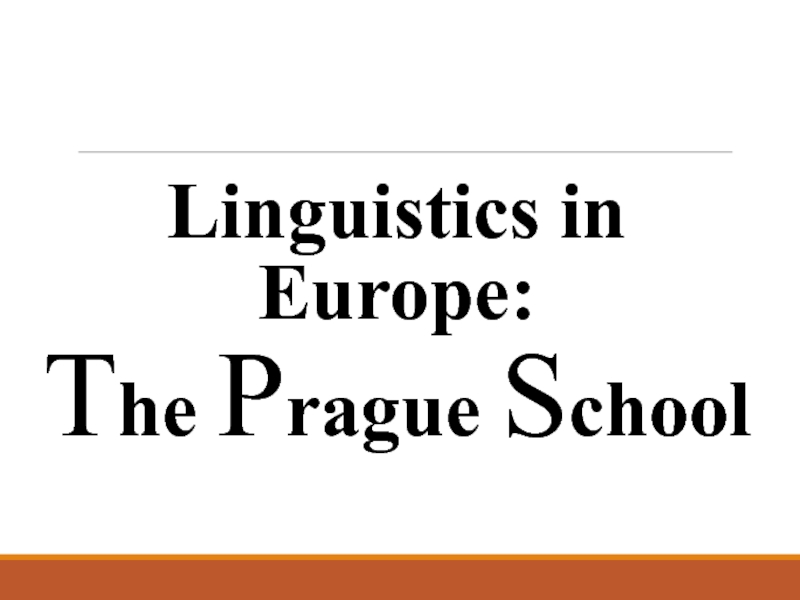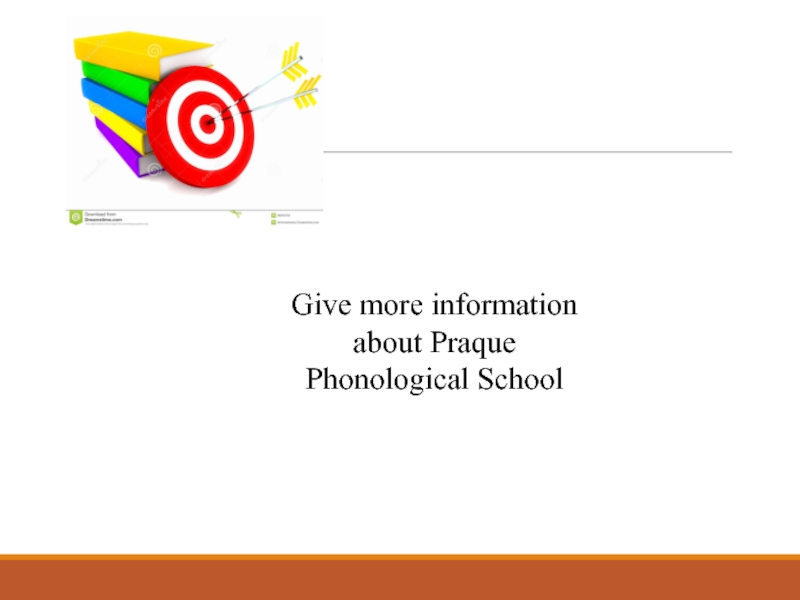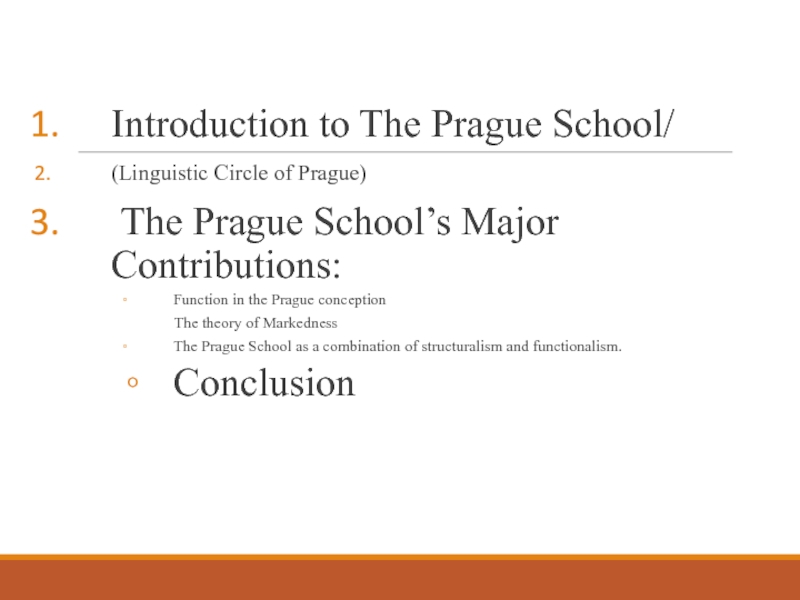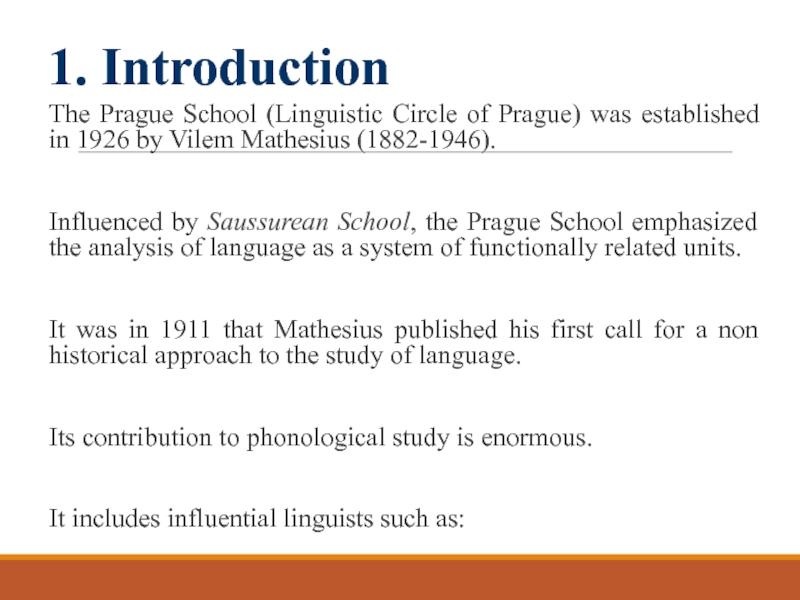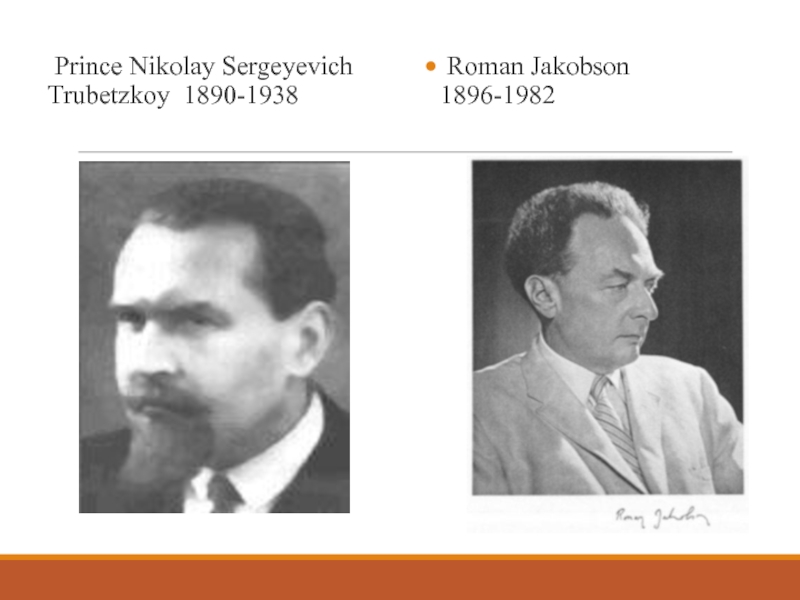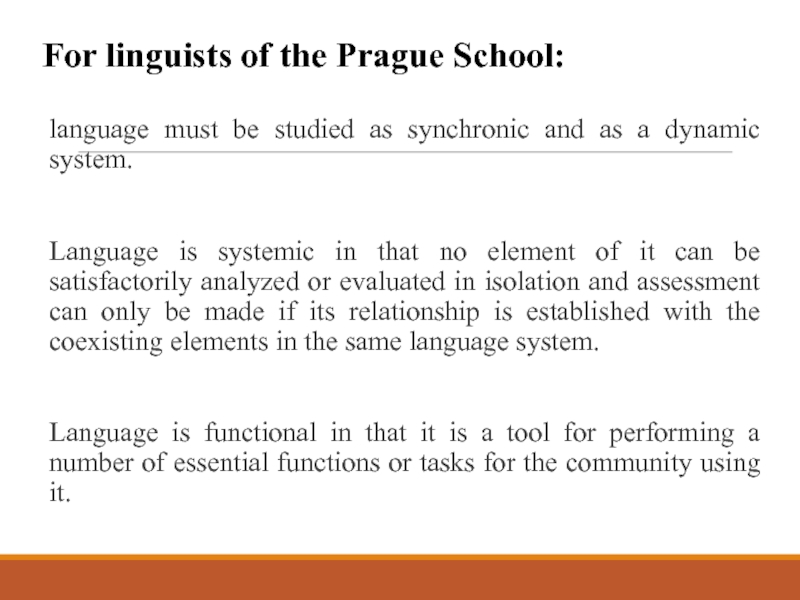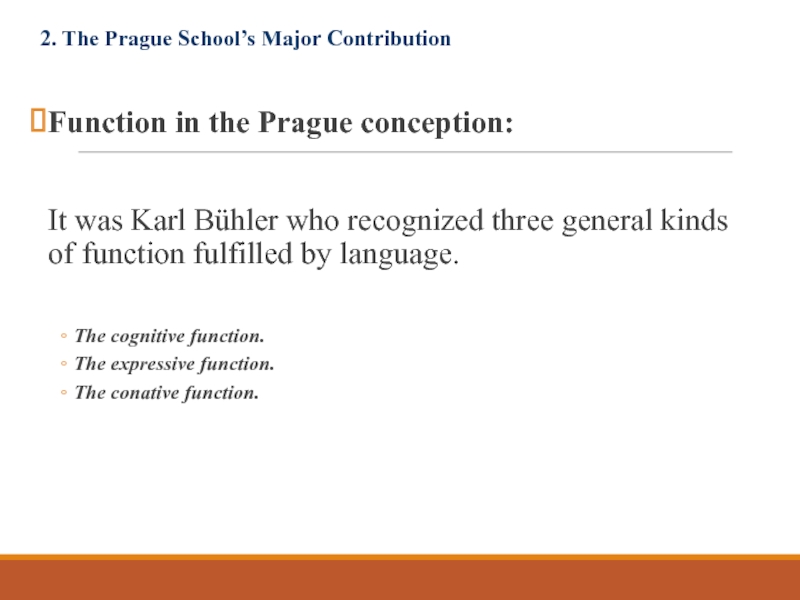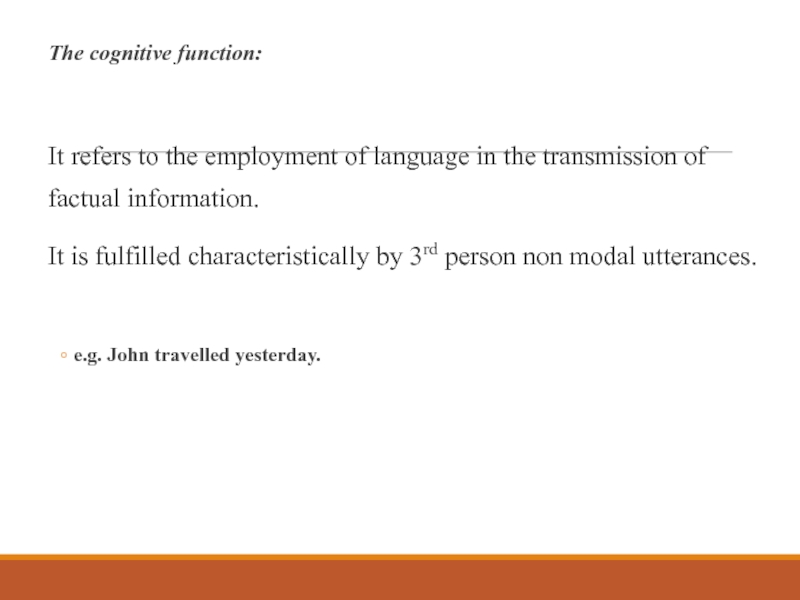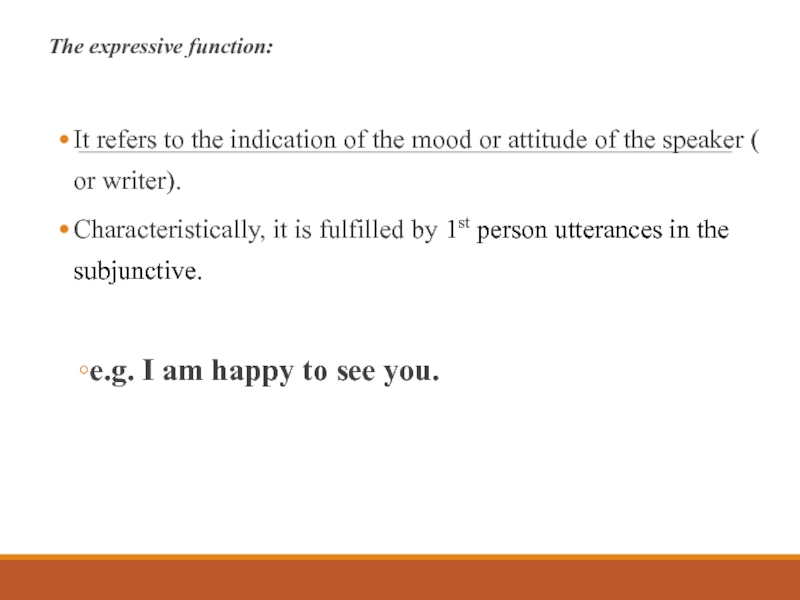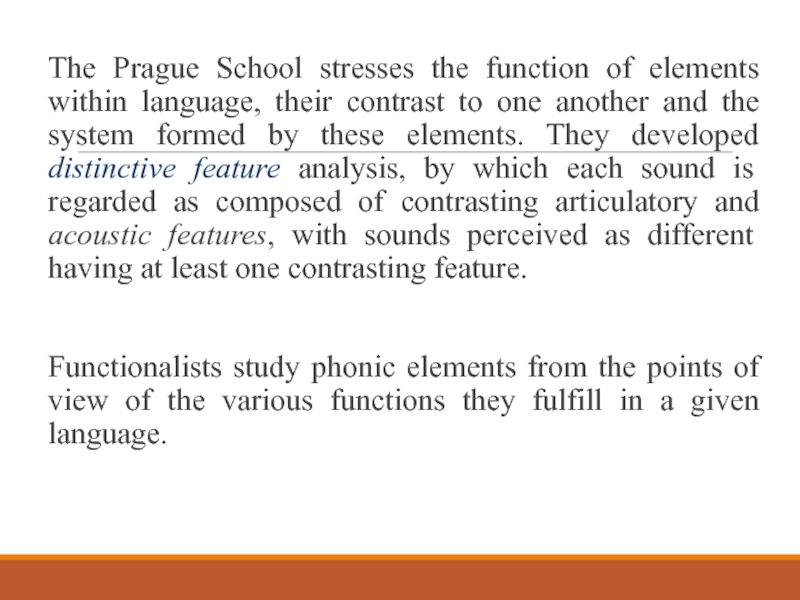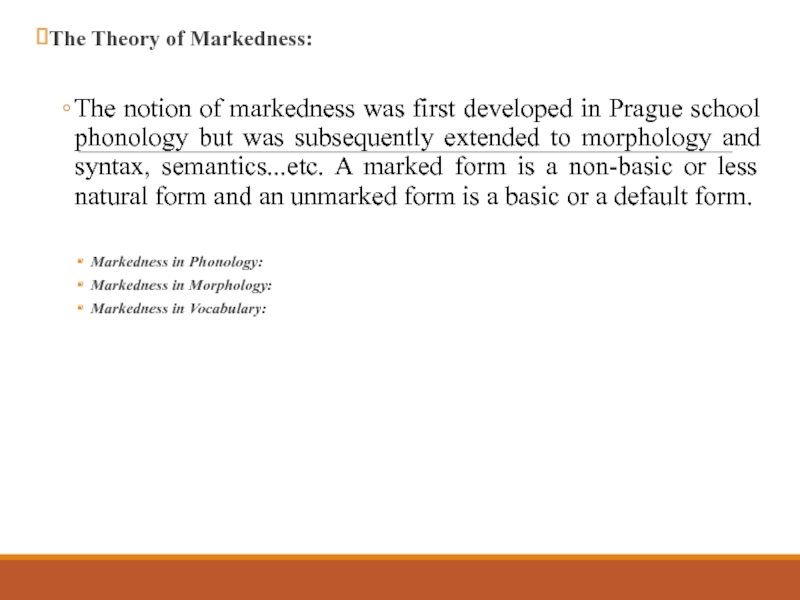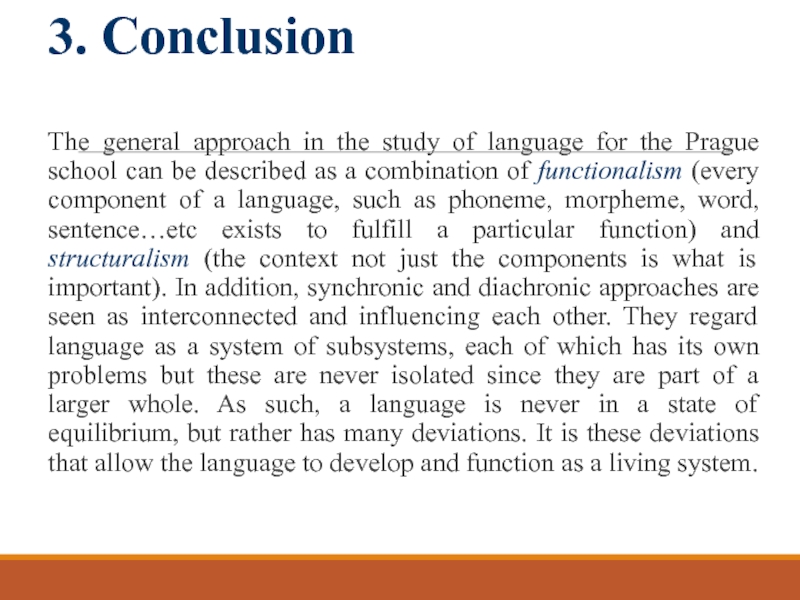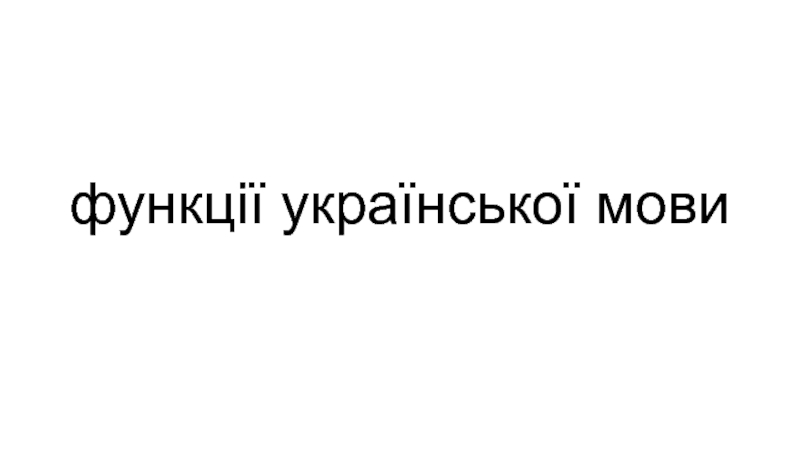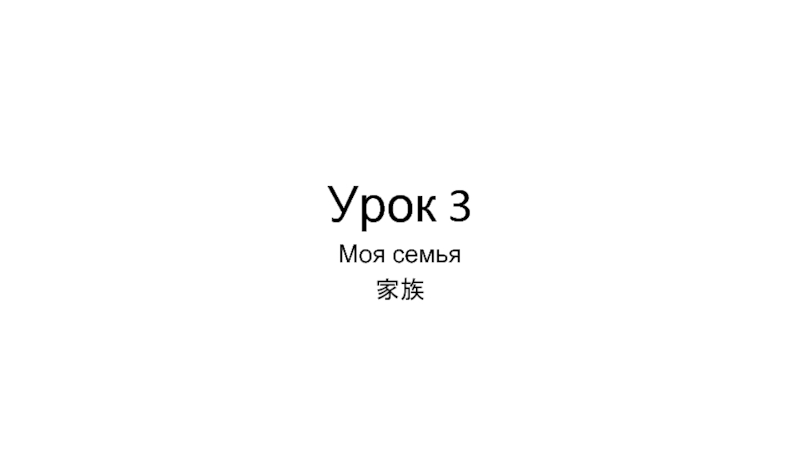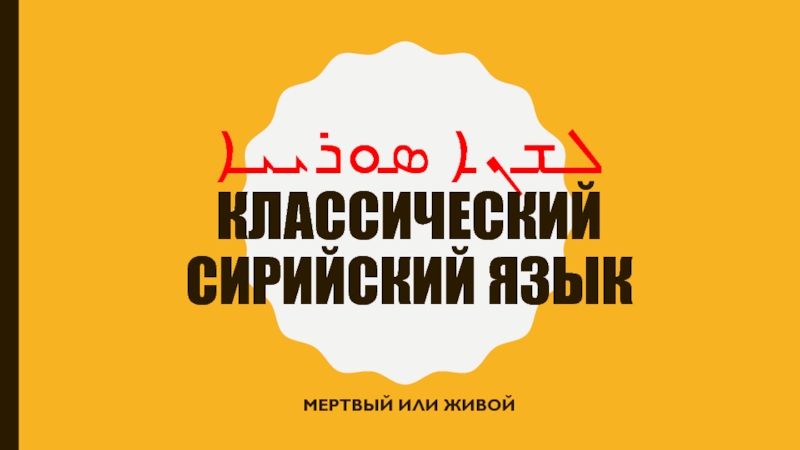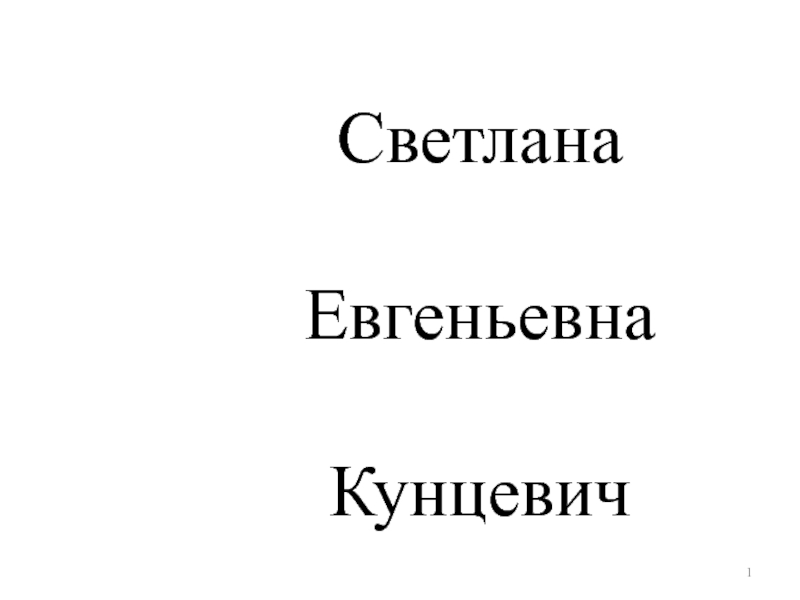- Главная
- Разное
- Дизайн
- Бизнес и предпринимательство
- Аналитика
- Образование
- Развлечения
- Красота и здоровье
- Финансы
- Государство
- Путешествия
- Спорт
- Недвижимость
- Армия
- Графика
- Культурология
- Еда и кулинария
- Лингвистика
- Английский язык
- Астрономия
- Алгебра
- Биология
- География
- Детские презентации
- Информатика
- История
- Литература
- Маркетинг
- Математика
- Медицина
- Менеджмент
- Музыка
- МХК
- Немецкий язык
- ОБЖ
- Обществознание
- Окружающий мир
- Педагогика
- Русский язык
- Технология
- Физика
- Философия
- Химия
- Шаблоны, картинки для презентаций
- Экология
- Экономика
- Юриспруденция
Linguistics in europe: the prague school презентация
Содержание
- 1. Linguistics in europe: the prague school
- 2. Do you know about types of phonological
- 3. Give more information about Praque Phonological School
- 4. Introduction to The Prague School/
- 5. 1. Introduction The Prague School (Linguistic Circle
- 6. Prince Nikolay Sergeyevich Trubetzkoy 1890-1938 Roman Jakobson 1896-1982
- 7. language must be studied as synchronic and
- 8. 2. The Prague School’s Major Contribution
- 9. The cognitive function: It refers to
- 10. The expressive function: It refers to
- 11. The conative function: It refers to
- 12. The Prague School stresses the function of
- 13. The Theory of Markedness: The
- 14. 3. Conclusion The general approach
Слайд 2Do you know about types of phonological schools?
Do you know about
Praque linguistic school?
Who is the founder of Praque school?
Слайд 4
Introduction to The Prague School/
(Linguistic Circle of Prague)
The Prague
School’s Major Contributions:
Function in the Prague conception
The theory of Markedness
The Prague School as a combination of structuralism and functionalism.
Conclusion
Function in the Prague conception
The theory of Markedness
The Prague School as a combination of structuralism and functionalism.
Conclusion
Слайд 51. Introduction
The Prague School (Linguistic Circle of Prague) was established in
1926 by Vilem Mathesius (1882-1946).
Influenced by Saussurean School, the Prague School emphasized the analysis of language as a system of functionally related units.
It was in 1911 that Mathesius published his first call for a non historical approach to the study of language.
Its contribution to phonological study is enormous.
It includes influential linguists such as:
Influenced by Saussurean School, the Prague School emphasized the analysis of language as a system of functionally related units.
It was in 1911 that Mathesius published his first call for a non historical approach to the study of language.
Its contribution to phonological study is enormous.
It includes influential linguists such as:
Слайд 7language must be studied as synchronic and as a dynamic system.
Language is systemic in that no element of it can be satisfactorily analyzed or evaluated in isolation and assessment can only be made if its relationship is established with the coexisting elements in the same language system.
Language is functional in that it is a tool for performing a number of essential functions or tasks for the community using it.
For linguists of the Prague School:
Слайд 82. The Prague School’s Major Contribution
Function in the Prague conception:
It was
Karl Bühler who recognized three general kinds of function fulfilled by language.
The cognitive function.
The expressive function.
The conative function.
The cognitive function.
The expressive function.
The conative function.
Слайд 9The cognitive function:
It refers to the employment of language in the
transmission of factual information.
It is fulfilled characteristically by 3rd person non modal utterances.
e.g. John travelled yesterday.
It is fulfilled characteristically by 3rd person non modal utterances.
e.g. John travelled yesterday.
Слайд 10The expressive function:
It refers to the indication of the mood or
attitude of the speaker ( or writer).
Characteristically, it is fulfilled by 1st person utterances in the subjunctive.
e.g. I am happy to see you.
Characteristically, it is fulfilled by 1st person utterances in the subjunctive.
e.g. I am happy to see you.
Слайд 11The conative function:
It refers to the use for influencing the person
one is addressing or for bringing about some particular effect.
It is fulfilled by 2nd person utterances in the imperative.
e.g. come here.
It is fulfilled by 2nd person utterances in the imperative.
e.g. come here.
Слайд 12The Prague School stresses the function of elements within language, their
contrast to one another and the system formed by these elements. They developed distinctive feature analysis, by which each sound is regarded as composed of contrasting articulatory and acoustic features, with sounds perceived as different having at least one contrasting feature.
Functionalists study phonic elements from the points of view of the various functions they fulfill in a given language.
Functionalists study phonic elements from the points of view of the various functions they fulfill in a given language.
Слайд 13The Theory of Markedness:
The notion of markedness was first developed
in Prague school phonology but was subsequently extended to morphology and syntax, semantics...etc. A marked form is a non-basic or less natural form and an unmarked form is a basic or a default form.
Markedness in Phonology:
Markedness in Morphology:
Markedness in Vocabulary:
Markedness in Phonology:
Markedness in Morphology:
Markedness in Vocabulary:
Слайд 143. Conclusion
The general approach in the study of language for
the Prague school can be described as a combination of functionalism (every component of a language, such as phoneme, morpheme, word, sentence…etc exists to fulfill a particular function) and structuralism (the context not just the components is what is important). In addition, synchronic and diachronic approaches are seen as interconnected and influencing each other. They regard language as a system of subsystems, each of which has its own problems but these are never isolated since they are part of a larger whole. As such, a language is never in a state of equilibrium, but rather has many deviations. It is these deviations that allow the language to develop and function as a living system.
